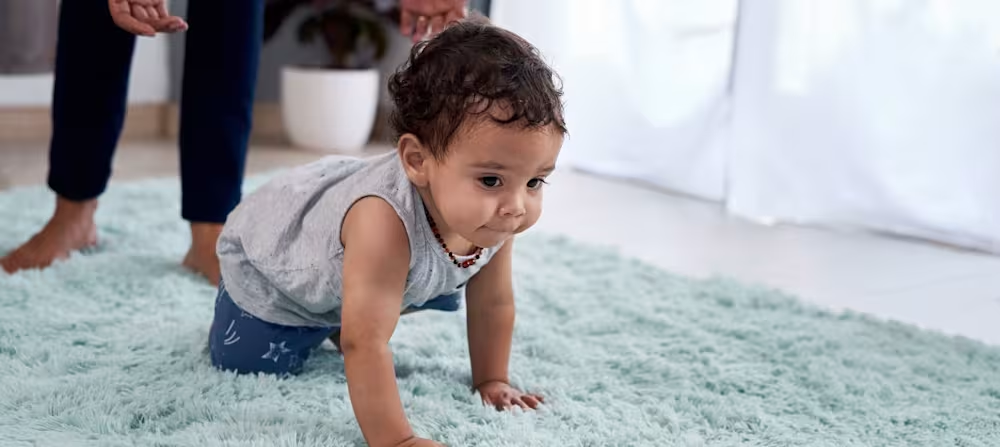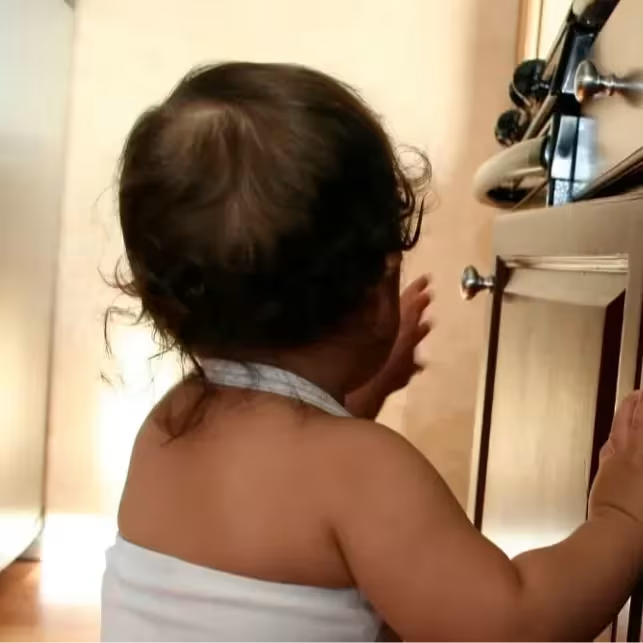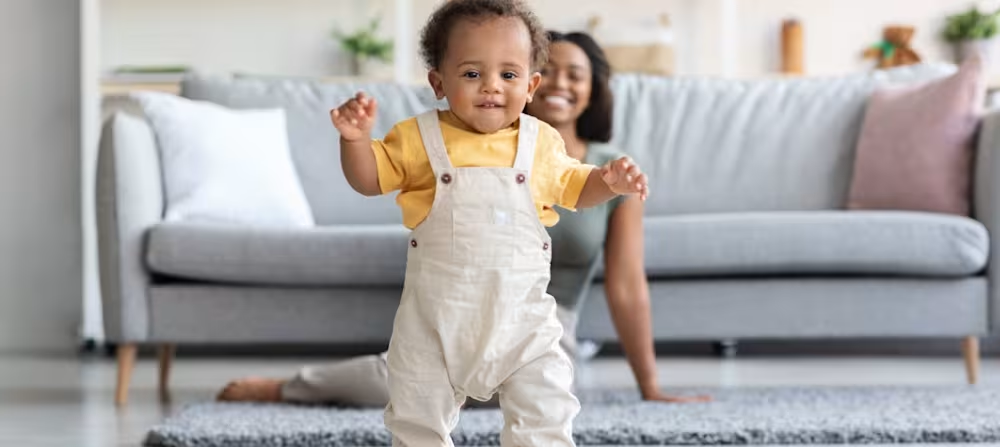Babies and sitting: When do babies sit up
Updated Dec 29, 2025

Most babies begin to sit up around their 6 month “birthday,” an exciting time indeed. Not only is sitting up a significant milestone parents look forward to, but it is also often a sign your baby may soon be ready for solids! While some babies can begin to sit up with support as early as the age of 4 months, most babies will master the skill of sitting on their own in their 6th month of life. Your baby sitting up is definitely something to celebrate because it opens up an entirely new world of exploration and discovery for your little one.
Signs your baby may be ready to sit up by themselves
One of the first signs your infant is ready to sit up on their own is being able to sit in a tripod position with both legs extended and one arm steadying them. Another sign your baby may be ready to sit up unassisted soon is observing them sit upright (without support) for a few seconds at a time.
What you can do to help your baby to sit
There are several ways to encourage your baby to practice their sitting skills. Keep in mind that sitting requires a strong core and balance which you can foster from an early age. Here are 3 ways you can help your baby learn to sit up:
#1 Tummy time
Since good head control is required for sitting, tummy time is a great activity you can begin doing with your baby from an early age to help them build the strength needed to eventually sit upright on their own. The American Academy of Pediatrics (AAP) encourages starting tummy time from birth.
In the very early weeks, you may find it difficult to incorporate tummy time into your day-to-day activities which is understandable since newborns feed and sleep A LOT! Work on building up to at least 15 minutes a day engaging with your baby on the floor while they practice lifting and turning their head.
Pro tips: You do not have to do tummy time for 15 minutes straight; if your baby is not the biggest fan of being on their belly, try breaking up the activity into (3) 5-minute blocks. If your baby doesn’t love tummy time on the floor right away, try having them lay on your tummy when you’re in a reclined position on the couch or bed. This will allow them to start off a little more inclined with the added bonus of having contact with a loved one at the same time.
#2 Assist your baby in sitting up
Once your baby is at least 3 months old and has had plenty of practice with tummy time, the next step is to encourage your child to lift their body up from a lying position. Think of this exercise as assisted crunches. As your baby lies on their back, sit opposite of them and extend your arms out. With your hands interlocked, gently assist your baby in sitting up. Repeat 5 - 10 times. This exercise helps build core strength and may be really fun for babies!
#3 Engage baby with toys
Holding up interesting toys or books is another fun and helpful activity you can do with your baby to encourage independent sitting. Age-appropriate toys [] for 4 - 8 month olds include musical instruments, soft balls, unbreakable mirrors, noisy teething balls, and security blankets.
Safe sitting tips for babies
As your baby is learning to sit upright you’ll want to address some new safety concerns. While they’re learning, have them practice sitting on the floor as opposed to a chair or couch to avoid falls. Consider having them practice sitting up while seated between your legs and/or surrounded by pillows to help prevent injuries. Make sure whether you’re using pillows or not, never to leave your infant sitting upright unsupervised.
This is also a great time to start baby-proofing your home since it will only be a matter of time before your infant is on the move. Assume a crawling position and explore your home from the vantage point of your baby. Here are some baby-proofing areas to consider:
Cover all outlets and hide/remove loose cords.
Fasten furniture to the walls to prevent it from toppling over in the event that your baby attempts to pull up or climb on it. Remove any unstable fixtures such as free-standing light fixtures.
Ensure other potentially dangerous areas are addressed such as locking oven doors, locking cabinets and drawers, securing toilet lids, blocking off stairs, etc.
Lower crib mattress to the next lowest setting. Many babies will practice new gross motor skills instead of sleeping and it will only be a matter of time before your baby can pull to standing
Never place car seats or other seating devices on elevated surfaces like counters or couches to prevent falling. Make sure to utilize seat belts and straps anytime your baby is sitting upright in a device like a high chair or stroller also to prevent falls.
What should I do if my baby is sitting up instead of sleeping?
New sitters can sometimes be so excited about their new skill that they will sit up in their sleep space when they should be sleeping. (Yes, that can disturb sleep!) Although it can be cute to see your infant sitting upright in their sleep space you may begin to wonder if they will ever fall asleep!
Our general recommendation is to avoid repositioning your baby too frequently.
If your baby is happy try to give them at least 5 - 10 minutes before attempting to lay them down again.
Sometimes babies simply are not tired yet and will lay down on their own once they feel more drowsy.
Repositioning your baby too often can feel frustrating for you and be overly stimulating for your baby.
If your baby continues to sit right back up after attempts to lie down, consider getting your baby up for a short break before doing a shortened version of your sleep routine and trying again.
When to worry if baby is not sitting up
Although the age at which babies learn to sit up on their own can vary, if your baby cannot sit upright with support by the age of 9 months, we recommend reaching out to your pediatrician. Even before then, If you notice that your baby isn’t able to hold their head up by the age of 4 months it can be a good idea to talk to your pediatrician. This doesn’t necessarily mean your baby is experiencing a developmental delay, but addressing any gross motor skill issues earlier on will be easier than working on them later.
Sitting FAQ
Share article:
Note: The content on this site is for informational purposes only and should not replace medical advice from your doctor, pediatrician, or medical professional. If you have questions or concerns, you should contact a medical professional.





